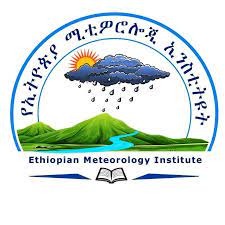The Ethiopian Meteorological Institute has announced that there will be heavy rainfall in Ethiopia over the next ten days, particularly in the initial days.
The institute predicts widespread rains in both quantity and distribution, leading to humid weather ranging from light to heavy rains in the southwest, west, and northwest regions of Ethiopia on a daily basis.
In the coming days, substantial rainfall is expected in various areas of the Oromia region, including East and West Welega, Kelem Welega, Horo Guduru Welega, Buno Bedele, Jimma, Ilubabor, Borena, East Borena, Guji, and West Guji, as well as Bale.
In the Amhara region, rain distribution will be more favorable in North, Central, South, and West Gondar, East and West Gojam, and Awi zones.
Conversely, light to moderate rains are anticipated in the central regions of Ethiopia, including Gurage, Silte, Addis Ababa, Dire Dawa, and Harar.
Two weeks ago, the Disaster Risk Management Commission issued a warning that up to a million people could be displaced due to impending floods in Ethiopia.
Autumn, one of Ethiopia’s three seasons, lasts for four months and is the primary rainy season for the southern half of the country. During this period, which spans from February to May, regions such as Somali, Guji, Borena, Sidama, South Ethiopia, and southwestern parts of the country receive 55% of their annual rainfall.
Autumn is considered the second rainy season for East and South Tigray, North and South Wolo zones, the Amhara and Oromia North Showa zones, and central areas of the country, including Addis Ababa, as well as the eastern areas such as Harar and Dire Dawa.
Recently, over 12 people lost their lives due to floods in Addis Ababa, the capital of the country and similar floods have occurred in other parts of the country, causing loss of life and property damage.
Meanwhile, drought persists in some areas of Ethiopia due to insufficient rainfall, leaving millions of citizens in need of aid each year.
The Borena zones of the Somali region and Oromia region on the eastern side of Ethiopia, as well as the southern areas of the country, have been repeatedly affected by drought and floods.
The number of citizens requiring humanitarian assistance in Ethiopia is increasing due to war and drought.
A recent statement by the People’s Ombudsman Institute confirmed that nearly 400 people have died of starvation in the Tigray and Amhara regions, including 21 children.
According to the United Nations, more than 20 million people in Ethiopia are in need of humanitarian aid due to climate change and conflict.
